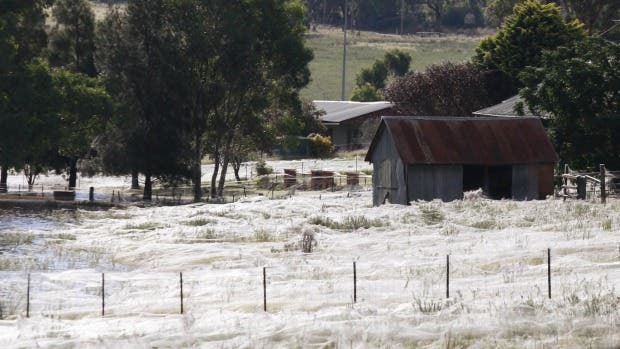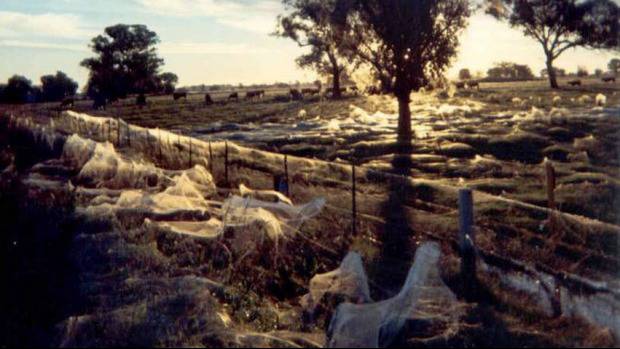It’s raining… spiders?! Countless baby spiders are falling from the sky in the Australian city of Goulburn, covering the entire landscape in spider webs they use as gliders. Let’s see what the science says.
“The whole place was covered in these little black spiderlings and when I looked up at the sun it was like this tunnel of webs going up for a couple of hundred metres into the sky,” Ian Watson, a resident of Goulburn, said in an interview.
Another resident said the city looks “abandoned and taken over by spiders”. So why does this incredible phenomenon happen?
Well, such arachnid rains aren’t as uncommon as you might think. Some types of spiders are known to migrate through the air, sometimes in large numbers. Australia and New Zealand have frequent cases, caused by several species. The spiders are actually incredibly creative in this process. They climb onto the highest peaks they can, and then simply jump, releasing a stream of silk they use as a glider. The technique is called “ballooning”.
Through this, they can travel long distances, and when they land, they cover everything with thick spider silk – something called “angel hair” in folklore.
“They can literally travel for kilometers … which is why every continent has spiders. Even in Antarctica they regularly turn up but just die,” Martyn Robinson, a naturalist from the Australian Museum explained.
But “kilometers” is an understatement. While most ballooning journeys end after just a few meters of travel, many sailors have reported spiders being caught in their ship’s sails, over 1,600 kilometres away from land, and atmospheric balloons flying at 5 km above sea level; spiderlings can survive for up to 25 days without food. The Earth’s static electric field may also provide lift in windless conditions But not all are successful in this endeavour – many don’t survive.
For ballooning, spiders use especially fine silk, called “gossamer” to lift themselves off a surface, and silk also may be used by a windblown spider to anchor itself to stop its journey. I guess spiders can actually fly… who knew?











